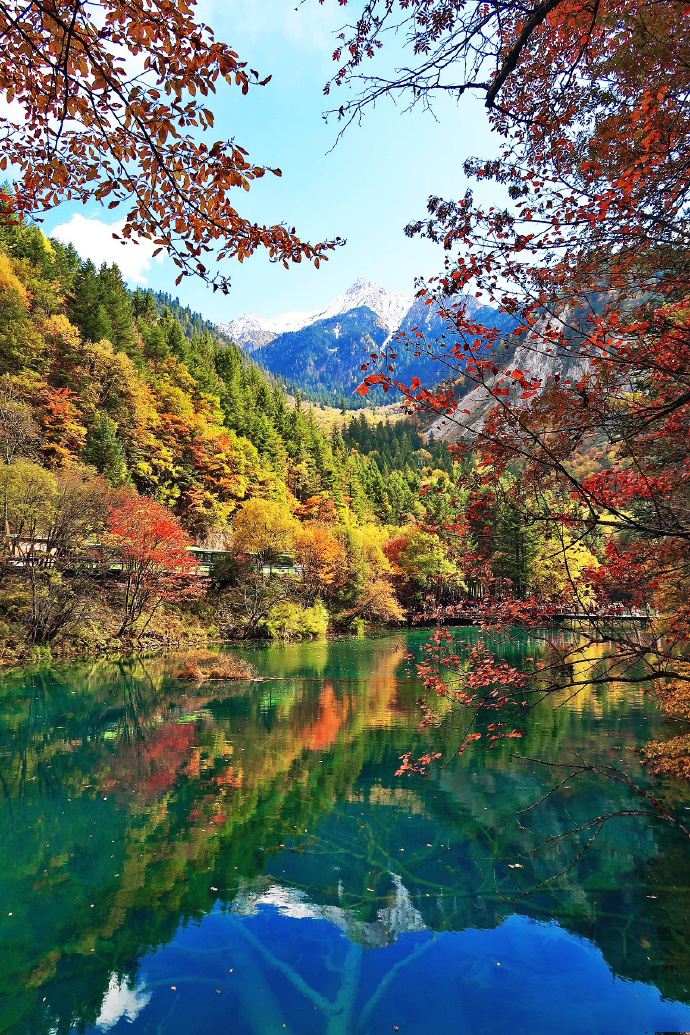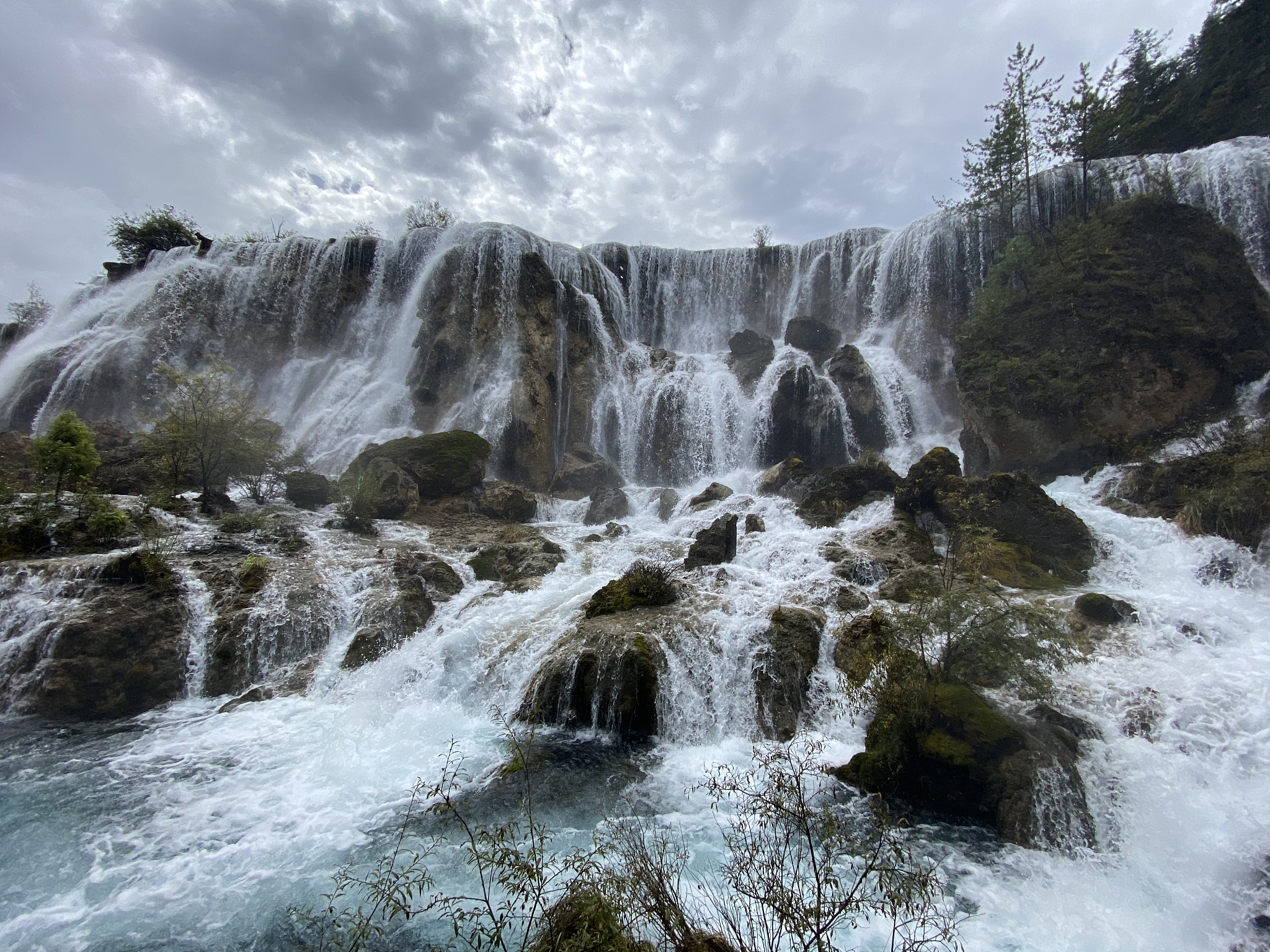Jiuzhaigou - A Dream Journey to a Fairy Tale World
Jiuzhaigou's colorful lakes and snow-capped mountains landscape, known as "fairyland on earth"
Jiuzhaigou's colorful lakes and snow-capped mountains landscape, known as "fairyland on earth"
Located in Jiuzhaigou County, Aba Tibetan and Qiang Autonomous Prefecture, Sichuan Province, Jiuzhaigou is China's first nature reserve established mainly for the protection of natural landscapes. It is also a World Natural Heritage site and part of the World Network of Biosphere Reserves. Jiuzhaigou is famous worldwide for its "Six Wonders": emerald lakes, cascading waterfalls, colorful forests, snow-capped peaks, Tibetan culture, and blue ice.
Jiuzhaigou gets its name from the nine Tibetan villages (Shuzheng, Zechawa, Heijiao, Heye, Pangya, Yala, Jianpan, Rexi, and Guodu) within the scenic area, which are also known as the "Nine Tibetan Villages of Heyue". As Tibetan people have lived in these nine villages for generations, the area is named Jiuzhaigou (Nine Villages Valley).
Jiuzhaigou sits at an altitude of over 2,000 meters and is covered with primeval forests. There are 108 lakes distributed throughout the valley, earning it the reputation of a "fairy tale world". On August 8, 2017, a 7.0-magnitude earthquake struck Jiuzhaigou, damaging some landscapes, but after restoration, most of the scenic spots have reopened to visitors.

Five-Flower Lake is located in the middle section of Rizegou, one of the three valleys in Jiuzhaigou, and upstream of the Peacock River. Due to calcium carbonate deposits on the lake bed, various colored algae, and reflections of colorful trees along the shore, the lake water displays various colors such as goose yellow, navy blue, dark green, and sapphire blue, hence the name Five-Flower Lake.
Five-Flower Lake is one of the most famous attractions in Jiuzhaigou, known as "the best of Jiuzhaigou" and "the essence of Jiuzhaigou". Under the sunlight, the lake water shimmers with brilliant colors, like a gem in a fairy tale world.
Long Lake is the largest lake in Jiuzhaigou, located at the end of Zechawagou valley, at an altitude of over 3,100 meters. It is about 600 meters wide with a maximum depth of 103 meters. Long Lake extends in an S-shape, surrounded by lush forests and snow-capped peaks all year round.
There is no outlet around Long Lake, and its water comes from melting snow from high mountains. Strangely, Long Lake never dries up or overflows, so the local people of Jiuzhaigou call it "a treasure gourd that can't be filled or drained".

Nuorilang Waterfall is located at the intersection of the three valleys in Jiuzhaigou, at an altitude of 2,365 meters. With a width of 270 meters and a height of 24.5 meters, it is one of China's large travertine waterfalls and the widest waterfall in China. "Nuorilang" means "man" in Tibetan, and also carries the meaning of "tall and majestic".
Nuorilang Waterfall is one of the iconic attractions in Jiuzhaigou. With its powerful water flow and thunderous sound echoing through the valley, it is equally magnificent in winter when it forms a spectacular ice waterfall.
Shuzheng Group Lakes are located in the Shuzheng Valley of Jiuzhaigou, consisting of 19 lakes of different sizes, stretching over 13.8 kilometers. It is the gateway to Jiuzhaigou's beautiful scenery. These lakes are connected end to end, winding continuously, with numerous waterfalls and streams between them.
The scenery of Shuzheng Group Lakes varies with the seasons: colorful flowers in spring, lush greenery in summer, vibrant foliage in autumn, and snow-covered landscapes in winter. At the end of the Shuzheng Group Lakes, there is an ancient mill and prayer wheel house, showcasing the local Tibetan people's way of life.
Jiuzhaigou's natural scenery is famous worldwide for its "Six Wonders": emerald lakes, cascading waterfalls, colorful forests, snow-capped peaks, Tibetan culture, and blue ice. These natural landscapes blend together, forming a fairy tale world.
Emerald lakes are the soul of Jiuzhaigou. The lake water in Jiuzhaigou is crystal clear,呈现蓝色、绿色、青色等多种颜色,这是由于湖水中的钙华沉积和藻类的作用,使得湖水在阳光的照射下呈现出不同的色彩。Jiuzhaigou has 108 lakes, each with its own unique charm.
There are numerous waterfalls in Jiuzhaigou, forming a spectacular waterfall group. The most famous one is Nuorilang Waterfall, which is 270 meters wide and 24.5 meters high, making it the widest waterfall in China. Additionally, there are Shuzheng Waterfall, Pearl Shoal Waterfall, etc., each with its own unique characteristics.
The colorful forests in Jiuzhaigou refer to the time in autumn when the leaves in the valley display various colors such as red, yellow, and green, forming a colorful world. Mid-October to early November is the best time to appreciate the colorful forests, when Jiuzhaigou looks like a huge oil painting.
There are many peaks over 4,000 meters above sea level around Jiuzhaigou, which are covered with snow all year round and look particularly spectacular under the sunlight. The most famous one is Xuebao Ding, with an elevation of 5,588 meters, which is the main peak of the Minshan Mountain range.
Jiuzhaigou is a Tibetan-inhabited area, where Tibetan people maintain their traditional way of life and cultural customs. Visitors can enjoy Tibetan song and dance performances, taste authentic Tibetan food, and learn about traditional Tibetan culture here.
In winter, thick ice forms on the surface of Jiuzhaigou's lakes, which appears blue under the sunlight, hence the name blue ice. Blue ice is a major wonder of Jiuzhaigou in winter, attracting many visitors to come and appreciate it.
Butter tea is a traditional drink of the Tibetan people, made from butter, tea leaves, salt, and other ingredients. Butter tea has a rich flavor and is nutritious, with the effects of refreshing the mind and dispelling cold. Visitors can taste authentic butter tea in the Tibetan villages of Jiuzhaigou.
Highland barley wine is a traditional alcoholic beverage loved by the Tibetan people, fermented from highland barley. Highland barley wine has a low alcohol content, a mellow taste, and a slight sweetness. During Tibetan festivals in Jiuzhaigou, highland barley wine is an indispensable drink.
Yak meat is a specialty food of Jiuzhaigou, with tender meat and rich nutrition. Yak meat can be prepared in various ways, such as roasting, boiling, and stewing. In the restaurants of Jiuzhaigou, visitors can taste various dishes made from yak meat.
The climate in Jiuzhaigou is humid, suitable for the growth of various wild mushrooms. There are many types of wild mushrooms here, which are delicious and nutritious. In local restaurants, visitors can taste various dishes made from wild mushrooms.
In Jiuzhaigou, visitors can not only enjoy beautiful natural scenery but also experience colorful activities and gain an in-depth understanding of the local culture and life.
Overall, autumn (mid-October to early November) is the best time to visit Jiuzhaigou, when the valley is colorful and the scenery is most spectacular.